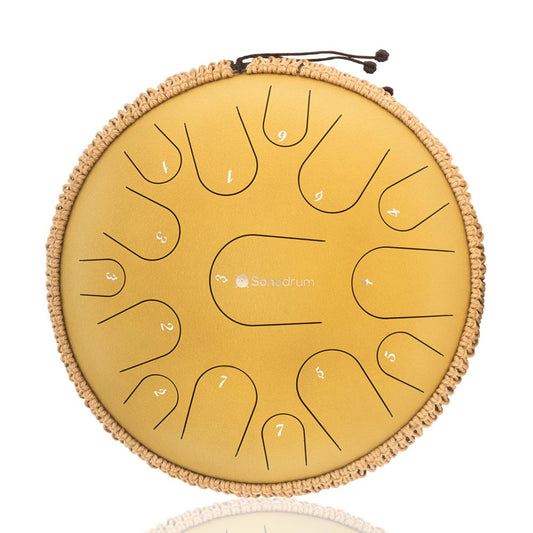In recent years, the tongue drum has emerged as a unique and captivating instrument that has found its way into various forms of popular culture. From its appearance in movies and TV shows to its use in commercials and video games, the tongue drum's distinct sound and aesthetic have captured the imagination of audiences around the world. In this article, we'll take a closer look at the growing presence of tongue drums in mainstream media and explore their impact on popular culture.
Movies and TV Shows:
Tongue drums have made notable appearances in movies and TV shows, both as part of the soundtrack and as visual props. In films such as "Avatar" and "Inception," the ethereal tones of the tongue drum have been used to create otherworldly atmospheres and enhance emotional moments. Similarly, TV shows like "Game of Thrones" and "Stranger Things" have incorporated tongue drums into their scores to add depth and texture to their soundtracks. The use of tongue drums in popular media reflects their versatility and ability to evoke a wide range of emotions, from mystery and intrigue to wonder and awe.
Commercials and Advertisements:
Advertisers have also taken notice of the unique appeal of tongue drums and have incorporated them into commercials and advertisements to capture the attention of viewers. Whether promoting luxury cars, lifestyle brands, or travel destinations, tongue drums are often used to create a sense of relaxation, adventure, and escapism. Their soothing tones and rhythmic patterns help create a mood of tranquility and harmony, enticing viewers to engage with the products or services being advertised. In this way, tongue drums have become powerful tools for marketers looking to connect with audiences on a deeper, more emotional level.
Video Games:
In the realm of video games, tongue drums have become increasingly prevalent as developers seek to create immersive and atmospheric soundscapes that enhance the gaming experience. From indie titles like "Journey" and "Fez" to blockbuster franchises like "The Legend of Zelda" and "Final Fantasy," tongue drums are often used to evoke a sense of wonder, exploration, and adventure. Their melodic tones and hypnotic rhythms add a layer of depth and immersion to the gaming world, drawing players into richly detailed environments and captivating narratives. As video games continue to evolve as an art form, tongue drums will likely play an increasingly prominent role in shaping their audio landscapes.
Impact on Popular Culture:
The growing presence of tongue drums in mainstream media reflects a broader cultural shift towards embracing alternative and unconventional forms of music and art. As audiences become more receptive to diverse and eclectic sounds, tongue drums offer a fresh and innovative approach to music-making that resonates with people of all ages and backgrounds. By appearing in movies, TV shows, commercials, and video games, tongue drums have become symbols of creativity, exploration, and self-expression, inspiring artists and audiences alike to embrace the beauty and diversity of the musical world.
Conclusion:
As the resonance of tongue drums continues to reverberate throughout popular culture, their influence shows no signs of slowing down. Whether serving as a backdrop for epic adventures, a soundtrack for emotional moments, or a catalyst for creative expression, tongue drums have carved out a unique and enduring place in the hearts and minds of audiences around the world. As we continue to explore the possibilities of music and art in the digital age, tongue drums will undoubtedly remain at the forefront of cultural innovation, inspiring new generations of artists, creators, and storytellers to push the boundaries of creativity and imagination.




